With a recent move (I am currently living in Spain) and getting used to the rhythm here, genealogy has taken the back burner for a few weeks. Now that I am more settled in, I am hoping that I can fall back in line with my posts (currently I am two behind – this post included!).
Given that September 15th – October 15th was Hispanic Heritage Month, I wanted to focus the post on someone Puerto Rican more known or famous in the United States (specifically looking at New York City, my home city). A recent visit this summer to the New York Public Library reminded me of a well-known Puerto Rican people might have heard of – Pura Belpré.
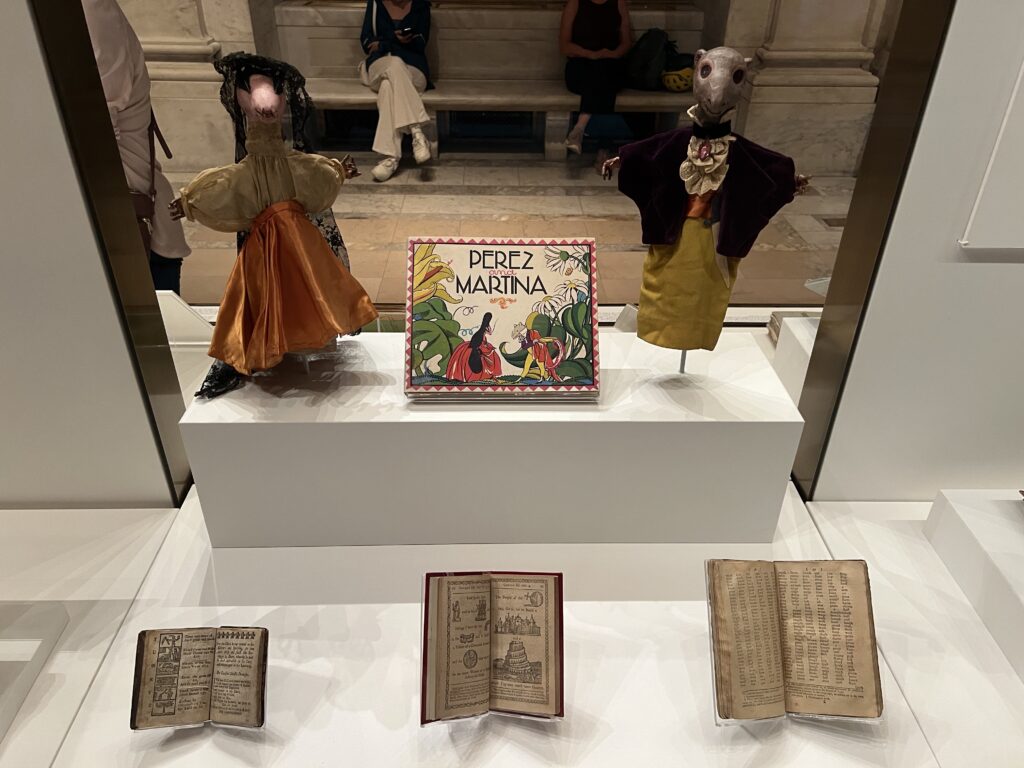
So I decided to dedicate this post to her life, both biographically and genealogically in order to find out more about who she was. Genealogically, there is still much to learn about Pura Belpré and her ancestors, but I figured I should post anyways and then update if and when I find out more information about her and her family.
Who was Pura Belpré?
Biographically
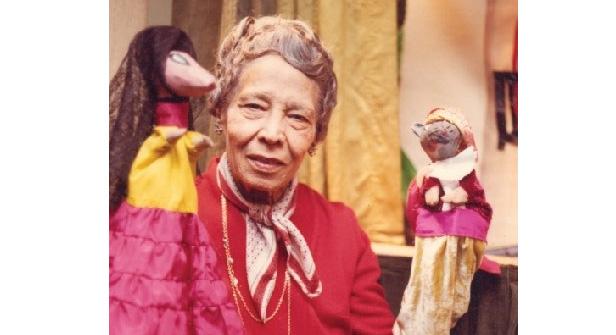
Pura Belpré became known as the first Puerto Rican librarian in the NYPL (New York Public Library) bringing Spanish and English stories to children all over New York City. When she first arrived to the NYPL, she found that there were not many stories for her Spanish audience and thus published Pérez y Martina (a Puerto Rican folktale story about love between a cockroach and a mouse) in order to make Spanish stories more accessible to children in the city. Pura would continue to publish more stories throughout her life as well. [1]
Pura’s efforts and works became so famous and popular that an award was named after her which was established in 1996. The award is “presented annually to a Latino/Latina writer and illustrator whose work best portrays, affirms, and celebrates the Latino cultural experience in an outstanding work of literature for children and youth” (ALSC). [2]
How did Pura end up in New York City? Well, apparently it was thanks to her sister’s wedding (Elisa Belpré Nogueras – who will learn a little bit more about genealogically) that Pura decided to come to New York, and from there on she made the city her home. Pura would then work in the garment industry before being hired as a Hispanic assistant in the 135th Public Library in Harlem and later was transferred to the 115th branch. At the time of her visit to NYC, Pura had been enrolled as a student in the University of Puerto Rico. [3]
An awesome connection is that I too worked for the New York Public Library throughout my teenage years. I worked for four years in a local branch in the Bronx near my home between 9th-12th grade, working at first as a Page and later Computer Page, shelving books and helping patrons use the computers at the library.
Who was Pura Belpré?
Genealogically
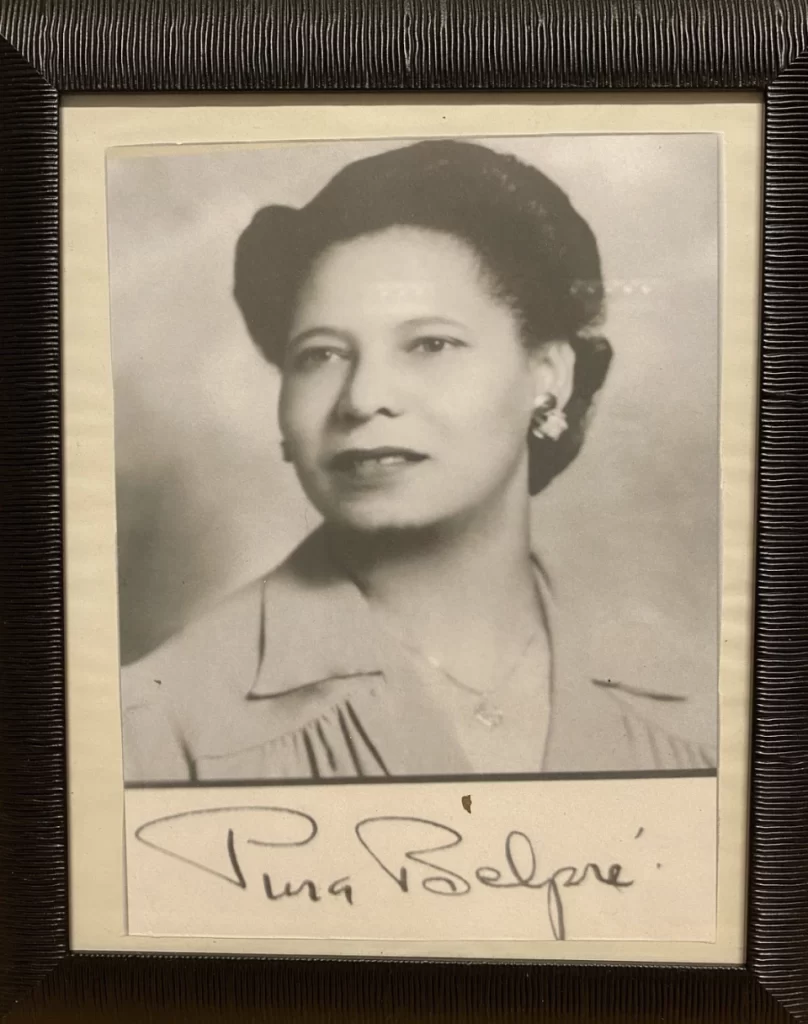
Pura was one of many children (evidence to come!). Her Wikipedia page states that she was born in Cidra, Puerto Rico and that her birthday was the 2nd February 1899 but that there is so dispute as to when Pura was actually born. Some other dates listed are the 2nd December 1901 and the 2nd February 1903.
So far, I have been able to find a “María” born on the 21st April 1899 baptized in Juana Díaz, likely ruling out the 1899 birth year for Pura. Why do I say this?
Because this María was just that, a María. I imagine Pura (could it be short for Purificación?) was likely given that name at her birth, and if not “Pura” then at least Teresa. The 1901 and 1903 are possible years of birth though no birth or baptism has been found for those years yet.
The 1910 census however points to a birth around 1898.
1910 Census

In 1910, Pura appears as “Pura Belprés Nogueras” listed in the household of her father Felipe Belprés Bernabé and his wife Monserrate Torren Bouchamp. However, you can notice that Felipe was listed as C2 (married a second time) for just three years to Monserrate when the census was taken and from looking at the children there are a few with “Belprés Torrens” and “Belprés Nogueras”. This would be that Monserrate was Pura’s stepmother. Pura was living in Guayama, Puerto Rico with two half siblings (Eugenio Belprés Torrens and Isidoro Belprés Torrens) and two full siblings (Luisa Belprés Nogueras and Pedro Belprés Nogueras). A nephew Ramón Colón is also listed.
So far I have been able to find thirteen children for the “Belpré[s] Nogueras” family: Rogelia, Luisa (1890), Felipe Luis (1891), Jesús María (1893), Elisa (1895), María (1898), Pura Teresa, María (1899), Ramón, Agustina (1902), Julia (1905), Pedro (1906), and Georgina (1907). Any child listed with a birth year means that I was able to either find a birth record or a baptism record to confirm their date of birth.
Something to notice is the spelling of Felipe’s surname in the 1910 census as Belprés with an “s” at the end. We will see various variations of this surname throughout the research of this family.
Pedro’s civil birth and Luisa’s baptism record can give us some more information to Pura’s family. Equally, Elisa’s birth will provide us a third variation of the surname “Belpré” .
Pedro "Belpré" Nogueras
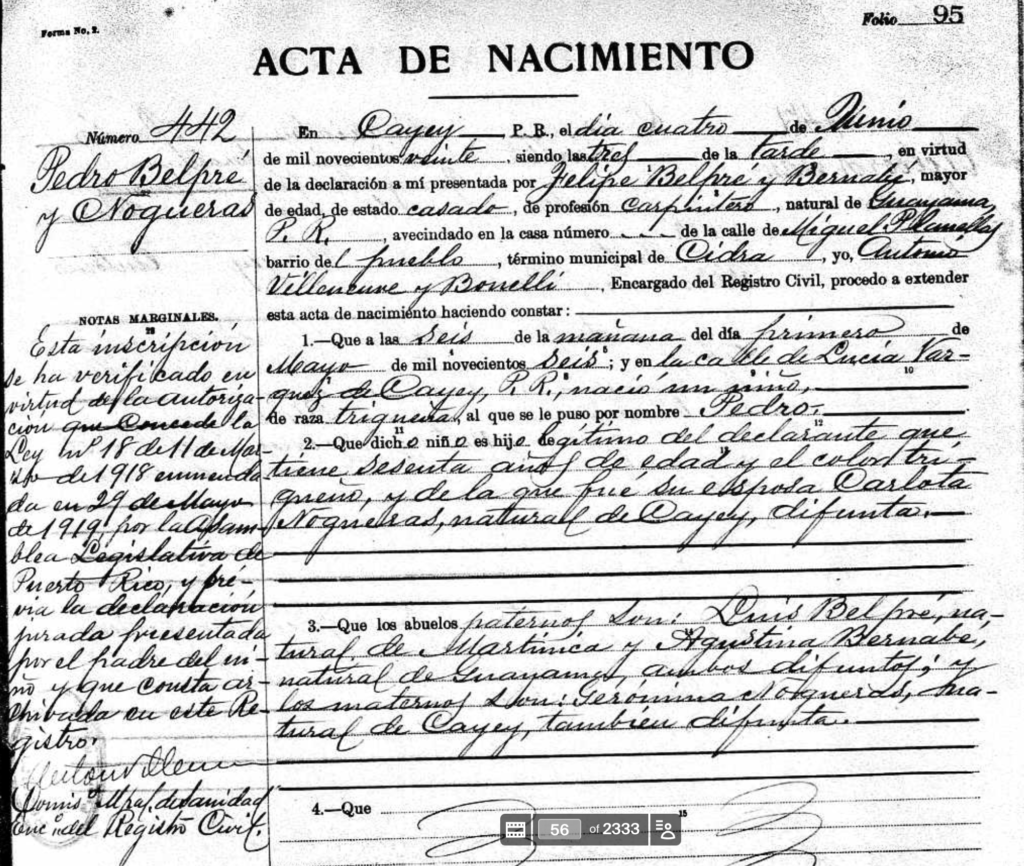
Pedro’s birth gives us some more genealogical information about Pura’s parents and grandparents.
Felipe Belpré Bernabé who appeared on the 4th June 1920 to declare his son’s birth was listed as being a married carpenter, originally from Guayama, living in Cidra, Puerto Rico.
Pedro was said to have been born the 1st May 1906 in Cayey to Felipe Belpré and his wife Carlota Nogueras, a native of Cayey who was deceased. This is a discrepancy between the birth listed here and Pedro’s estimated birth year on the 1910 census. It is possible that because Pedro was declared 14 years (more or less) after this birth that the year was miscalculated or misstated in the 1920 Civil Registry entry.
The birth record also listed their grandparents, Luis Belpré, a native of Martinique and Agustina Bernabé, a native of Guayama, both deceased. Gerónima Nogueras, the maternal grandmother, was a native of Cayey, also deceased.
Here we can see that according to Felipe, his father apparently was from Martinique, a French island I have talked about ad nauseam since I have ancestry from this island as well.
Luisa "VELPRES" Nogueras
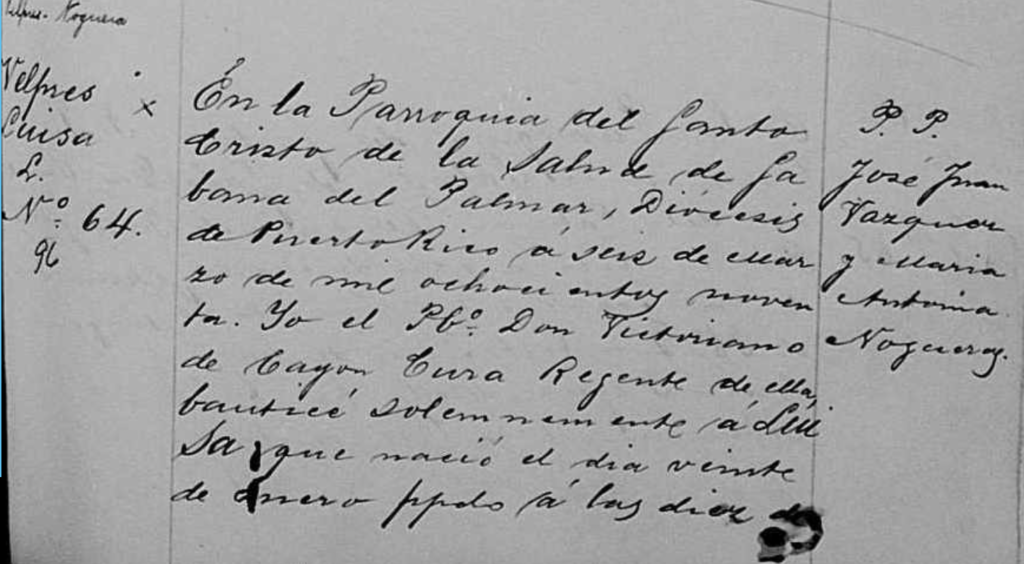
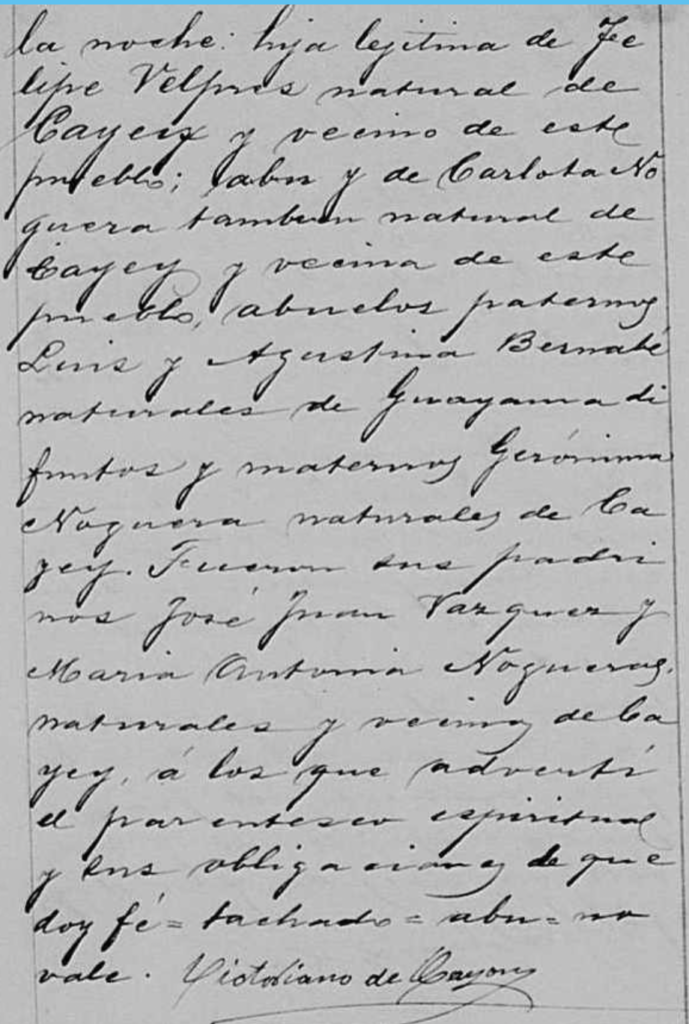
Interestingly enough, Luisa’s baptism occurred in Sabana del Palmar [current day Comerío].
Her baptism occurred the 6th March 1890 and mentioned she was born the 20th January 1890, the legitimate daughter of Felipe Velpres, a native of Cayey and his wife Carlota Noguera, also from Cayey. The grandparents were listed as Luis and Agustina Bernabé, natives of Guayama and deceased and the maternal grandmother was Gerónima Noguera, a native of Cayey. Her godparents were listed as José Juan Vázquez and María Antonia Nogueras (who I imagine is related to Carlota somehow, a possible sister).
Here we can see that the surname is listed as Velpre. However, given Spanish has no vocal distinction for /v/ and /b/, I was not too surprised by this spelling discrepancy.
Elisa "VERTPRES" Nogueras
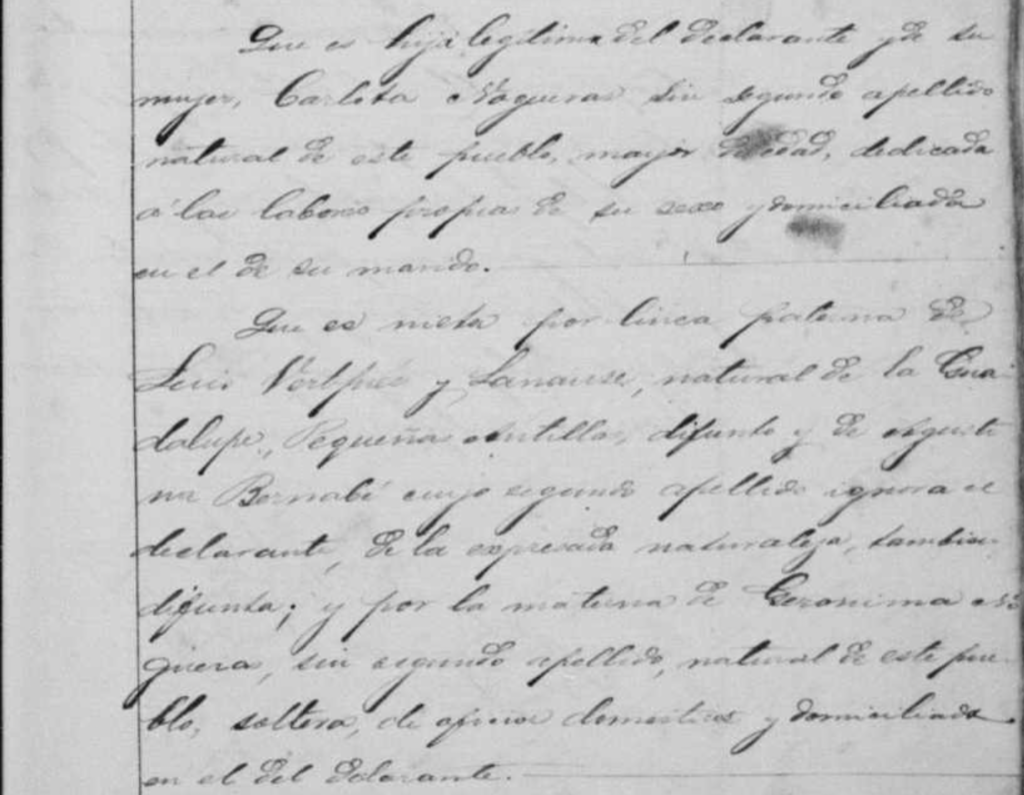
Lastly, I want to look at Elisa’s birth record – a sister born the 27th April 1895. The main reason is because here the surname was listed as Vertprés and the paternal grandfather was listed as “Luis Vertprés Lanausse”, a native of Guadeloupe, deceased.
This spelling is important to take into consideration because it is possible that it is closer to its original French spelling. The pronunciation of this surname would have been [Ver-pre] quite similar to Verpré or Belpré.
Another important piece of information is the fact that Guadeloupe is added here as a potential place of origin and also the surname “Lanausse”. I have seen this surname present before in the south of Puerto Rico in Salinas, so interesting to see it amongst this family.
Pura's Father -
Felipe Belpré
Felipe Belpré and Carlota Nogueras were likely married before January 1890, since Luisa was baptized as a “legitimate daughter” in Comerío’s church. I searched the Comerío church records between 1874-1890 and did not find a marriage for them. I am currently searching in Guayama where the family also lived.
Felipe Belpré was born in Guayama the 12th October 1859 and baptized in said town the 3rd December 1859. His godparents were Antonio Lanausse and Elena Lanausse; here again we see the surname Lanausse which is important to note.
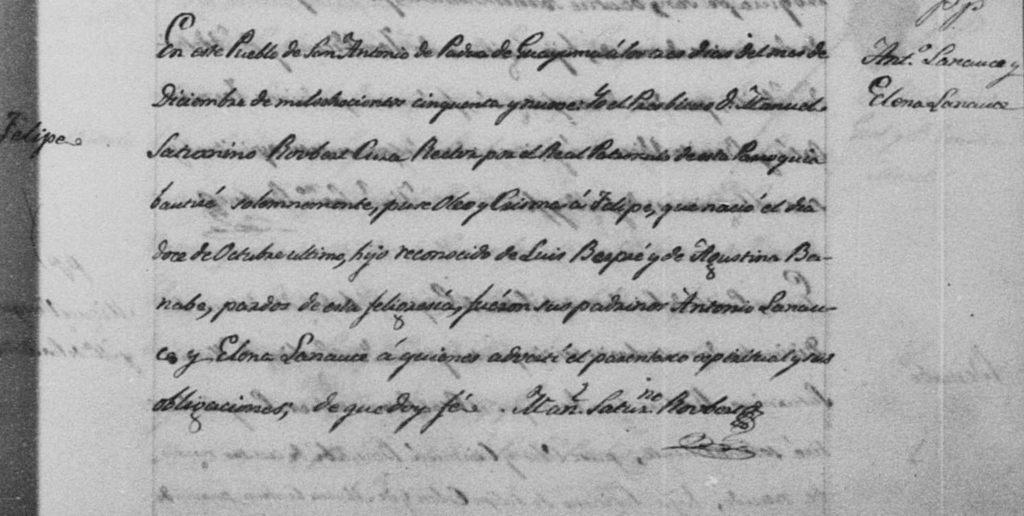
Felipe’s baptism mentions that he was an hijo reconocido to his parents Luis “Berpré” and Agustina Bernabé. This would mean that when Felipe was born, his parents were not married and therefore he was only seen as a recognized (read: illegitimate child) and not legitimate in the eyes of the church. Nevertheless, he was able to receive the surname “Belpré” despite being an illegitimate child, something that did not always occur between unwed couples.
Felipe was able to appear on the 1910 Census (which we saw already) and also on the 1920 Census. We also know that Felipe was married twice, the first time to Carlota Nogueras and the second time to Monserrate Torrens.
By 1920, Felipe was living in Cidra with his wife Monserrate and two of their full biological children – Eugenio and Isidoro. Pura and the rest of the siblings were already living elsewhere by this time.

Pura along with two sisters would be living in San Juan at this time in the household of an older sister, Rogelia Belpré Nogueras, who was married to Benito Alonso (though her status appears as married on the census, her husband is not listed as living with her. This could be a simple error when the census was taken). Along with them were also Rogelia’s children – Zenaida, Benito Jr., and María.

Felipe Belpré Bernabé would shortly pass away in Cidra, Puerto Rico the 15th March 1923 having died from Pulmonary Tuberculosis. Felipe would have been 63 years old at the time, his profession was that of carpenter, and he was listed as being a native of Guayama, Puerto Rico. Interestingly, his race was listed as mulata (mulatto) which is similar to that of the 1910 census where he was listed as “Mu” but in the 1920 census we see that he and his wife were listed as “B” for blanco (white).
His death mentions both of his marriages as well as the name of his parents, Luis Belpré and Agustina Bernabé, both deceased. No grandparents are listed for lack of knowledge by the declarant.
PURA'S Mother -
CARLOTA NOGUERAS
Since Pura’s mother, Carlota Nogueras, died fairly young, I have no census record appearances for her. Similarly, since I do not have any baptism or marriage record for her yet I have limited information about her life and parents in general.
We do know that her mother’s name was Gerónima Nogueras and that they were both likely from Cayey, Puerto Rico.
Carlota would die on the 18th February 1908 to the same illness that would later take away her husband Felipe’s life – Pulmonary Tuberculosis. Carlota’s death mentions that she was a resident of Arroyo, Puerto Rico along with her husband Felipe Belpré but that she was a native of Cayey and about 34 years of age.
It mentions that Felipe and her had five children: Luisa, Elisa, Pura, Pedro, and Teresa. Though we do know that they had more children in total based on other records such as civil birth records and church baptism records. Her mother, Gerónima, is listed as still being alive and a resident of Calle Santa Teresa, the same street Felipe and Carlota were living on at the time of Carlota’s death.
Interestingly enough, her death record was signed by her husband Felipe Belpré, so we know he had some level of literacy. Equally, one of the witnesses was a Juan Nepomuceno Nogueras, likely of some relation to Carlota.

Pura belpré -
1930, 1940, 1950 Censuses
1930 Census


By 1930, Pura was listed as living in New York City with her sister Luisa (now listed as Louisa) Belpré. Her sister and her, along with a boarder named Jacinto Miranda, were listed as living on West 114th Street in Manhattan. I checked the address on Google Maps and it seems that now a days it is a park.
We can also observe that Pura was working as a “clerk” for the public library! Something else that is interesting to note is that Luisa and Pura’s race was listed as “neg” (negro). It is interesting to consider how they would have seen themselves in regards to race as Puerto Ricans living in New York City around this time, especially before the big boom of immigration from the island to the city.
1940 Census

10 years later, we find Pura Belpré living in the Bronx with her sister Elisa Belpré, Elisa’s husband Raymond Maduro, their children Carlota and Reynaldo, and two other siblings to Elisa and Pura – Pedro Belpré and María Belpré.
Pura was still working for the public library at this time as well.
Their address was listed as 974 Prospect Avenue, and to this day it shows a building that still stands according to Google Maps.
1950 Census

Finally, another 10 years later and Pura Belpré was back living in Manhattan with her husband Clarence White, a musician at a night club, and with her brother Pedro Belpré, who was working as a waiter at a café. Interestingly, Pura is not listed as working any longer for the New York Public Library and her brother’s surname appears as “Nogueras” (their maternal surname) and not as Belpré.
According to a marriage license index on Ancestry.com, Pura Belpé married Clarence White the 10th December 1943 in Manhattan. It is said that when Clarence and Pura married, she left her job with the library so that she could dedicate her time to writing more and to traveling with her husband. [4]
Conclusion
Pura Belpré’s death is listed on Wikipedia as the 1st July 1982, having died in New York City. Though Pura died 41 years ago, her legacy still lives on via the library and the Pura Belpré award I mentioned earlier.
Pura is a great example of someone that came to the United States and though was not involved in politics or any career that might have changed the country “for the better” on a macro scale, she was able to bring joy through storytelling to the children of New York City, and especially to the children of immigrants/immigrants themselves who did not speak English – creating change on a micro scale, and one that was important to the everyday lives of New Yorkers.
It seems that Clarence and Pura did not leave behind any children, but I imagine there are many Belpré descendants out there that are proud of the work that Pura did while living in New York. It also makes you wonder, what if Pura had never attended her sister’s wedding in New York City? What would have become of her and what life would she have lived?
It goes to show you that the decisions we make everyday, even the smallest ones like a simple trip, can ultimately alter the path our life takes.
Happy Hispanic
Heritage Month!
Cover Photo: “115th Street, story-telling group, African American children with Miss Pura Belpre”, New York Public Library Digital Collections (https://digitalcollections.nypl.org/items/510d47d9-8237-a3d9-e040-e00a18064a99 : accessed 24 October 2023).
[1] “How NYC’s First Puerto Rican Librarian Brought Spanish To The Shelves”, NPR – National Public Radio (https://www.npr.org/2016/09/08/492957864/how-nycs-first-puerto-rican-librarian-brought-spanish-to-the-shelves : accessed 26 October 2023)
[2] “Pura Belpré Award”, ALSC – Association for Library Service to Children (https://www.ala.org/alsc/awardsgrants/bookmedia/belpre : accessed 26 October 2023)
[3] “Black History Month: Afro-Latina Pura Belpré gave children the precious love of books and stories”, Daily Kos (https://www.dailykos.com/stories/2018/2/25/1737128/-Black-History-Month-Afro-Latina-Pura-Belpr-gave-children-the-precious-love-of-books-and-stories : accessed 26 October 2023)
[4] Idem.

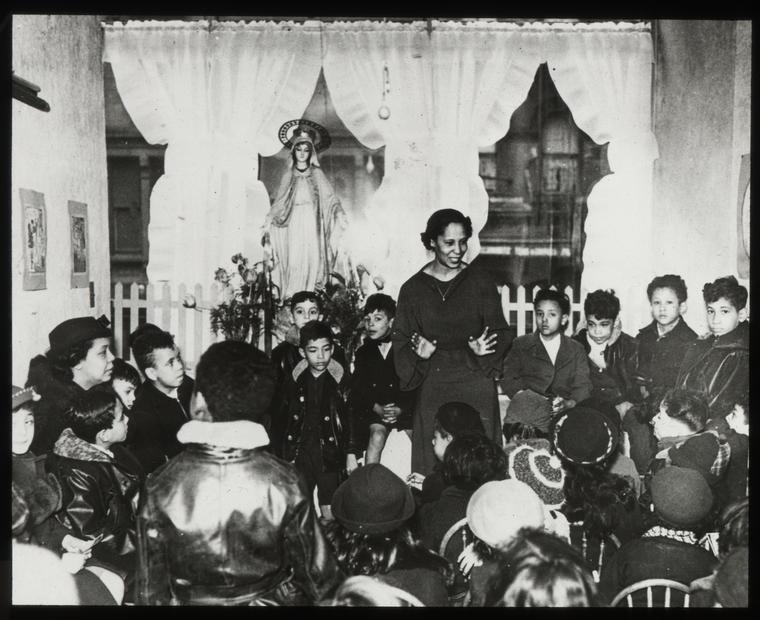
Very interesting genealogy information. I saw the exhibit “Treasures” at the NY Public Library and she is mention with her work “ La Cucarachita Martina”.
And the muppets Perez and Martina.
Thanks for sharing your work!